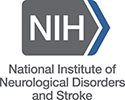
Photo from wikipedia
Chronic pain disorders are leading causes of disability worldwide. In the United States, more than 50 million people suffer with pain daily or on most days, and those most severely… Click to show full abstract
Chronic pain disorders are leading causes of disability worldwide. In the United States, more than 50 million people suffer with pain daily or on most days, and those most severely impacted also have a heavier burden of medical comorbidities. The current epidemic of overdose deaths in the United States originated from the overprescribing of highly addictive opioids to treat pain amidst a landscape of woefully inadequate treatment alternatives. The tragedy has been compounded by the explosion of overdose deaths due to the influx of fentanyl onto the illicit drug market. Chronic pain is a disorder of neural circuits and one of the most common diagnoses in general neurology practice. Engineered to protect the organism by creating avoidance behavior from harmful stimuli, the neural systems that mediate pain are strongly integrated in our reflexive circuits, but also in those circuits that subserve mood, motivation, and sleep. The neural circuits for pain are heavily layered with opioid receptors, as are our “reward” circuits. However, there are nodes where the circuits and mediators of pain can be separated from the reward circuits involved in addiction. Recent advances in basic neuroscience have identified a host of new targets for reducing pain without the potential for addiction. Disappointingly, however, with few exceptions, large pharmaceutical companies have abandoned the pursuit of new pain therapeutics. Nonetheless, the future for novel therapy development looks bright. New tools from the BRAIN (Brain Research through Advancing Innovative Neurotechnologies) initiative provide powerful means to map, monitor, and modulate neural circuits, and together with advances in molecular and cellular neurobiology, have identified a host of strategies to pursue. These include the discovery of human genetic mutations that cause inability to sense pain, and the identification of specialized membrane receptors for different pain sensations, for which Ardem Patapoutian and David Julius received the 2021 Nobel Prize in Medicine. New medications for migraine that act on the calcitonin gene receptor protein demonstrate that new knowledge does lead to new pain therapies. Therapeutics may result from the discovery of abnormal spontaneous firing in dorsal root ganglia cells in persons with radicular pain, and by manipulating the signaling pathways between neurons and glia, neurons and inflammatory cells, and even neurons and keratinocytes. Groundbreaking early studies hold promise that it may be possible to dissociate the sensation of pain from the unpleasantness of pain. Experiments with mice have identified amygdalar neurons that are activated by a painful stimulus. Through chemogenetic manipulation of these neurons—inserting a gene stops or drives neuronal firing in response to a systemically administered chemical—the animals retain their protective withdrawal reflexes but seem apathetic to the nociceptive stimulus and continue to behave normally. Deep brain stimulation of cortical and subcortical areas is also being tested to reduce suffering due to pain. 14 Melzack and Wall discovered decades ago that there is a descending
Journal Title: Annals of Neurology
Year Published: 2022
Link to full text (if available)
Share on Social Media: Sign Up to like & get
recommendations!